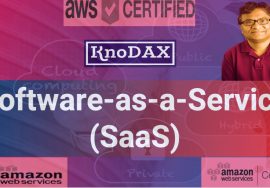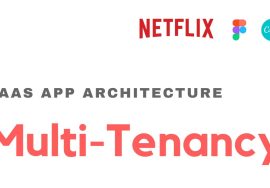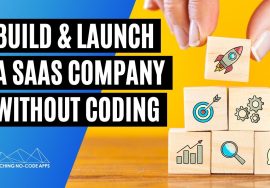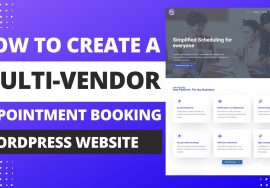SaaS Financial Model Tutorial | Scaling a Software Startup to $1 Billion
We build a SaaS financial model in Excel for an enterprise software startup scaling up to a $1 billion (unicorn!) valuation in its first four years. Free template included.
RESOURCES & LINKS:
____________________________________________
► SaaS Financial Model Free Template Download:
🚨 Join my Finance for Startups training program (with personalized support, livestreams, and more):
Join My Communities:
► Subscribe to my email newsletter:
► Discord:
My Excel Courses:
► Become an Excel Power User in 2.5 Hours (85% discount):
► Master Excel Keyboard Shortcuts (85% discount):
Related Financial Modeling Videos:
► Understand Cost Per Conversion Marketing:
► How VCs Calculate Customer Retention & LTV:
► CAC for SaaS & B2B businesses:
► How to Evaluate Marketing Performance:
____________________________________________
We learn how to build a financial model for a SaaS company (software as a service) trying to scale to a billion dollar valuation. You can download the SaaS financial model template free in the description.
We walk through every step of the financial model in this video – it is a lot fun and I would encourage you to watch the whole thing!
We build the customer acquisition funnel (which is an enterprise software sales team & commission structure), the new and recurring bookings, a revenue recognition schedule, the P&L, balance sheet, and cash flow, look at a series of fundraising rounds and finally calculate the SaaS financial metrics that investors are heavily focused on.
Marc Andreessen famously published an essay called "why software is eating the world" back in 2011, highlighting the ways in which software companies were poised to take over broad swaths of the economy – and this also became the central investment thesis behind one of the most important VC firms in the world, Andreessen-Horowitz.
Why are software companies so valuable? First off – because they are made of code, and code effectively has no marginal cost to sell. They are infinitely scalable, have gross margins of 80-90%, and their only assets are data & humans.
In addition, the overall experience for both customers and business is generally better and cheaper when services are delivered as a software solution. For this reason, software companies have both taken market share from legacy industries, and created many new markets.
Given the superior experience for customers, churn rates are often very low – meaning customers have high lifetime values – driving huge recurring revenue streams at 80-90% gross profit margins for these businesses.
For this season, software as a service (SaaS) companies command superior valuations because of their sticky customers and sky-high profit margins.
SECTIONS:
0:39 intro to customer acquisition for enterprise software as a service (SaaS) startups
2:00 setting up a SaaS sales funnel, new bookings, and sales team
7:10 forecasting expansion and contraction (churn) revenue for SaaS
15:35 calculating enterprise software sales bonus plan (new, renewals, up-sells)
18:48 total active customers, total bookings, and recurring revenue recognition
24:05 shortcut formula for SaaS revenue recognition
28:48 recap & moving into the pre-launch phase (income statement modeling)
44:58 calculating the gross margin (typical enterprise software GM range)
48:13 modeling SaaS startup operating expenses
54:04 calculating operating profit
55:30 calculating net income & tax loss carry forward asset
57:55 CAPEX & depreciation schedule
1:01:25 linking depreciation into the income statement
1:02:00 building the cash flow statement – understanding fundraising needs
1:03:30 building the balance sheet alongside cash flow
1:07:09 linking CAPEX into the cash flow statement and balance sheet
1:10:28 cash flow from financing + capital raised
1:12:10 calculating net cash flow!
1:14:00 modeling owner’s equity on the balance sheet and balancing
1:17:00 analyzing how much investment capital we need to raise for our SaaS startup
1:20:00 gut checking the model and finding an error – critical moment
1:21:25 raising our third VC round
1:23:20 SaaS financial metrics – key KPIs for software companies
1:28:04 calculating & understanding net dollar retention (NDR) for SaaS businesses
1:32:28 calculate LTV: CAC ratio for software companies
By the end of this video, you will know how to build a SaaS financial model for enterprise software startups – I guarantee it!
If you have questions – leave a comment below and I'll try to help. Cheers!
#saas #saasfinancialmodel #startups












Hi Eric! Thanks for the in-depth video. I had a couple questions: 1). Shouldn’t MRR be sum(total recurring revenue over past 12 months)/12 instead of sum(total bookings over past 12 months)/12? Unless I’m thinking of “recurring” too literally. 2). How did you figure out that our current customers are profitable and most of the cash burn is coming from onboarding new customer?
Very useful, thanks Eric. 2 questions…
1. Any tips on how to include receiving 50% of the annual subscription upfront (instead of 100%) with the remainder on monthly instalments?
2. Implementation charges (50% of our customers typically pay a notable set up fee)?
This is an absolutely amazing video and the time that you have put in to explain is incredible. Thank you for that. Definitely recommend your channel.
Hey Vassanta – I really appreciate that feedback and I’m glad this lesson was valuable for you. I’m going to keep releasing lots more videos like this this year. Cheers 🙏
Hey Eric, great tutorial. I have a quick question. For the churn you only caculated it at 20% of new bookings. What about the churn of recurring customers? Am I missing something?
Eric thank you so much for these videos. I appreciate your content, teaching and insights.
You are very welcome Jacob. Glad to hear it.
Hey Eric, super interesting channel, has been very informative. Would you be interested in making a SaaS cap table dynamics video for us VC enthusiasts, I would greatly appreciate it! Thanks and great work on the channel!
Hey – thanks for the suggestion, I just put it on my list of ideas for building content. I think a video about cap tables, deal terms, and industry jargon like pre vs. post money etc would be helpful. Working on it!
This is great Eric. Thanks for walking us through this step by step.
Glad it was valuable Jay, cheers!
Eric, thanks for sharing! Very good content, thanks for the education you are providing to us.
It’s my pleasure Deivid, glad it was valuable for you 👍
Thank you so much for your education and time! Very valuable content!
My pleasure 👍
Thanks a lot. Your explanations are really great!
Really glad to hear it Madina!! Thanks for the comment
This is like an entire college course or something. Thank you so much!
haha, that’s what I like to hear!
Maybe I’m missing something but it seems as though the model is only capturing the recurring revenue on 1 year of the renewal, and not on any subsequent year renewals. For example, for the first two contracts in M13, we recognize additional revenue related to them in M25. If those contracts renew and pay for an additional year in M37, I don’t believe this model captures that revenue. Can you confirm? I’m building something out for myself and I noticed this.
Also the NDR calc only looks at growth for new contracts not existing ones that have been renewing for years.
Can someone plz confirm this, I may be wrong haha, but Insert a cumulative contracts row, so you take last years new contracts and add to last years recurring contracts, then apply Churn% to that number to get this years recurring contracts and onward. The churn% will be applied to both the returning new and the existing and not just new (you may have to check link in Active customer sec also). The model assumes customers will renew only once in the Churn Rev section, but also never gets rid of them in the Active total customers section, actually applies 0% churn to existing customers, which effects the customer support numbers. I am not sure if i am wrong, as i am new to this, but this would have a ripple effect through the model.
Hey Eric, this is a great content. Thank you for the Education.
My pleasure, happy to help Hicham and glad you found it valuable.
So grateful for these videos, Eric. Thanks man
Really glad to hear that they are valuable Olumide. I appreciate the comment and it’s my pleasure to help
This is the best financial model video ever! Thanks a lot Eric, you are doing a great job with your content here. Keep it up!
Appreciate that Iryna!! Will do
Thanks for watching – what’s something new you learned in this SaaS financial model walkthrough?
@Eric Andrews Hey thanks so much for your response!!!
Many thanks!!!
@Sergio Montes de Oca Thank you Sergio! Appreciate it!!!
@Eric Andrews just bought your excel course!!
@Eric Andrews hey I really appreciate your response!! Great videos
@Sergio Montes de Oca In general capitalizing (or doing it too much) turns your balance sheet into kind of a disaster. I’ve seen it done and it never really make the financials better, usually worse. You can do it, but often you end up with an enormous “asset” that barely makes sense, as well as ridiculous amounts of depreciation. I think it’s easier to just expense. The only thing that matters is bookings, revenue, deferred revenue, marketing, and cash for SaaS businesses.
Eric thank you so much! It’s so helpful and straightforward. You are actually producing value for people – that’s already more than what 99% of startups do 🙂
Love to hear it that’s my goal!! Thanks Elad
Eric, this amazing model is for a SaaS product with one price tier. But in Enterprise Software and most SaaS companies there are several pricing tiers/plans, and clients usually upgrade to a higher one. Is it possible to create a video & sheet that focuses on multiple pricing tiers and the dynamics of clients moving between tiers? That would be a more accurate description SaaS sales, especially in enterprise.
@Elad Leshem appreciate the idea, I’m currently on a content creation break because I’m building a bigger finance for startups training program that I’m launching about 8 weeks from now. Once that is launched, I’ll start creating new videos again and I put this idea on my list as I think a lot of people have this question, thanks!
@Eric Andrews it can be in a sequal video to this one and a sequal shee. Not necessarily building one from scratch. I am happy to help you of you want.
@Elad Leshem I’m specifically designing a whole module about this in the course I’m getting ready to launch on November 14, Finance for Startups.
Hey Elad – 100% agree that there are usually license counts, different pricing tiers, discounts for upgrades, etc – but that is pretty unique to each individual business and modeling all that usually takes quite a bit longer – it would be more of an entire course than a youtube video. My goal with this video was to show more of the overall financial dynamics of an enterprise saas business….and even with the simplified pricing it was pushing 2 hours, I can’t believe people are even watching it! I’ll think about what else I can do to show the process of modeling out all that detail. Thanks for the thoughtful comment and suggestion.
Epic one! Loving the walkthrough. Thanks Eric!
My pleasure Keyspan…thanks for checking it out!!
I’m going to suggest this for our next movie club! What a ride. Awesome video Eric – keep it coming!
Yesss!!!!! Thanks for going on that ride with me Duncan, ready to build the next SaaS unicorn now ?? 😎😎😎